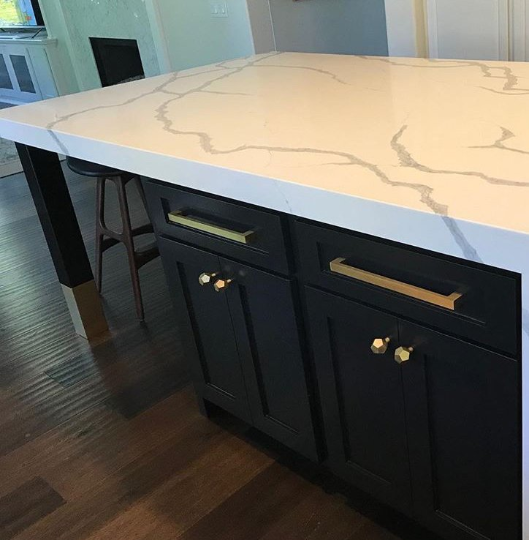Attain the Perfect Equilibrium of Form and Function with Legs For Kitchen Island
Necessary Aspects to Think About When Selecting Legs For Kitchen Island
Choosing the appropriate legs for a kitchen area island entails a cautious analysis of multiple aspects that can significantly influence both capability and visual charm. As we discover these aspects, it comes to be clear that each decision can have significant effects for the general kitchen area experience.
Product Options
When selecting legs for a kitchen island, understanding the different product options is vital for attaining both aesthetic appeal and architectural honesty (Legs For Kitchen Island). The selection of material considerably affects not just the durability of the island but additionally its overall design and performance
Steel legs, often made from stainless steel or functioned iron, add a industrial and contemporary feel while ensuring durability and security. These products are resistant to wear and can support significant weight, making them excellent for bigger islands.
One more choice is engineered products, like MDF or plywood, which can be a lot more economical while still providing a series of finishes. Nonetheless, they may not offer the very same degree of stability as solid timber or metal. Finally, materials such as acrylic or glass can develop a modern look, though they might require added assistance to guarantee security.
Ultimately, the option of material for kitchen island legs need to align with the wanted functionality and the overall motif of the kitchen area.
Style and Style

When considering style, the shape and finish of the legs are essential. Tapered legs can offer a sense of lightness and elegance, while thicker, more robust legs can share toughness and security. Furthermore, the surface-- be it painted, stained, or all-natural-- need to enhance the cabinets and counter top materials to create a unified appearance.
Additionally, the style of the legs can also mirror individual taste. Custom or decorative legs, such as those including complex carvings or unique geometric forms, can work as centerpieces, including personality and personality to the kitchen. Inevitably, the best choice will certainly not only enhance capability however also boost the aesthetic allure, making the kitchen area island a standout feature of the home.
Elevation Considerations
Choosing the proper height for cooking area island legs is important, as it directly affects both functionality and convenience. The conventional elevation for a kitchen area island generally varies from 36 to 42 inches, aligning with usual counter top elevations. A 36-inch height is excellent for cooking and food preparation, enabling comfy use of cooking area appliances and devices. Conversely, a height of 42 inches is usually chosen for islands planned for bar seating, fitting taller feceses and providing an informal dining experience.

It is additionally crucial to represent users' choices and heights. Tailoring the height can ensure a comfy experience for all family participants, making the kitchen island an extra practical and enjoyable area.
Weight Support
Making sure adequate weight assistance for kitchen island legs is crucial for both safety and performance. The kitchen island typically offers several objectives, including food prep work, eating, and additional storage space, demanding a robust assistance framework. When selecting legs, it is vital to consider the total weight capacity needed based upon the island's intended use and the products that will certainly be placed on it.
The option of product for the legs plays a significant function in their weight-bearing abilities. Strong wood, metal, and durable compounds usually offer remarkable stamina contrasted to lighter products. In addition, the design of the legs-- whether they are straight, tapered, or have a pedestal type-- can affect their capacity to disperse weight effectively across the structure.
Additionally, the leg positioning need to be purposefully planned to enhance stability. Legs positioned at the corners or with a larger base can better support much heavier tons. Constantly get in touch with the supplier's specifications regarding load limits to guarantee that the legs can sustain the intended weight without compromising safety. In recap, picking cooking area island legs with ample weight assistance is crucial for developing a practical and risk-free culinary space.
Installment and Upkeep
Correct installation and upkeep of kitchen island legs are essential for guaranteeing long life and stability. This commonly involves protecting the legs to the island base using suitable bolts, ensuring that the legs are level and straightened.
Once set up, normal maintenance is required to maintain the integrity and appearance of the legs - Legs For Kitchen Island. For wood legs, routine cleansing with a wet cloth and application of appropriate timber gloss can prevent wetness damages and keep their finish. Metal legs might call for a gentle cleaning option to get rid of oil and grime, complied with by a completely dry towel to stop rust formation
In addition, evaluate the legs routinely for signs of wear or damage, such as cracks or loose joints. Tightening screws or bolts as needed can also lengthen the life-span of the legs. By sticking to these installment and upkeep techniques, home owners can make certain that their cooking area island continues to be i thought about this strong and aesthetically appealing for many years to find.
Conclusion

Visual comprehensibility is paramount in selecting the style and design of legs for a kitchen area island, as these aspects considerably affect the total setting of the room. Conical legs can supply a feeling of agility and style, while thicker, more durable legs can share toughness and security.Picking useful link the ideal elevation for cooking area island legs is critical, as it straight influences both capability and convenience. In recap, choosing kitchen area island legs with sufficient weight support is important for creating a useful and secure cooking area.
In conclusion, selecting legs for a cooking area island demands cautious consideration of various factors, consisting of product choices, style, elevation, weight support, and installation.